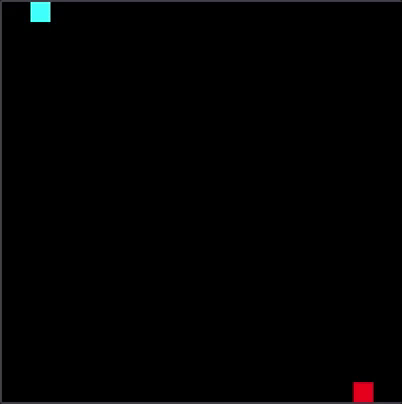Animator is a block-based UIView animation helper which enables complex animations to be performed with ease.
When there's a complex multi-step animation that needs to be performed, we usually break these down into smaller animatable steps and animate these smaller steps one after the other. To do this, every new animation step needs to be invoked after the completion of the last step. When using the stock UIView animate methods, the code gets very ugly and unmanageable with a complex animation. If you add every step into a method and invoke these methods in the completion blocks of the last animation step, the code readability reduces slightly as there's no continuation.
As a developer, when you visualize an animation, and when you need to prototype that and polish over it, having a readable codebase helps a lot. It helps you better understand the steps and fix bugs easily. That's where Animator comes in to help.
#Using Animator
Most simply, call addAnimations: with a closure that contains the animation code on Animator. Invoke animate to begin animating. This animates whatever statements are in the block with a 1s duration (default).
Animator.addAnimations() {
//Animation code
}.animate()
- Every block of animations that need to be performed during one animation cycle needs to be passed as a parameter to
addAnimations: addAnimations:can be chained.- The blocks passed with
addAnimations:are executed in the ordered these methods are invoked. - Every animation block is performed only after the previous block completes.
- Call
animateafter all animations have been added to begin animating from the first block. addAnimations:method contains various parameters that can be passed along to tweak the animation behavior.- Most of these parameters have been given default values to get you started with ease.
Many animation blocks can be chained together with very simple and easy-on-the-eye syntax as seen below.
Animator.addAnimations() {
//Animation code
}.addAnimations() {
//Animation code
}.addAnimations() {
//Animation code
}.addAnimations() {
//Animation code
}.addAnimations() {
//Animation code
}.animate()
Each block is executed after the completion of the last block.
#Features of Animator
-
Supports setting duration, delay and animationOptions.
Animator.addAnimations(withDuration: 1, delay: 1, options: [UIViewAnimationOptions.curveLinear]) { //Animation code } -
Supports animations with spring damping and initial velocity constants.
Animator.addAnimations(usingSpringWithDamping: 0.7, initialSpringVelocity: 0) { //Animation code } -
You could pass duration, delay and animationOptions along with with spring damping and initial velocity constants to the function. You could instead choose to leave out duration or animatiOptions or delay selectively when invoking the function.
-
The
animatemethod can accept a completion block to let you know when the entire batch of animations that have been chained together completes.Animator.addAnimations() { //Animation code }.addAnimations() { //Animation code }.addAnimations() { //Animation code }.animate { //Completion of all animations chained above }
#Other Facts
- Developed on Swift 3.0.1
- The playground contains a demo which you can go through.
- You need to open the assistant editor in the Playground to view the output animation. (View -> Assistant Editor -> Show Assistant Editor) or the keyboard shortcut option+command+return (if you haven't changed that).
- To use
Animatorin your project, just drag the file 'Animator.swift' into your project which is available in the 'Source' directory in this repository. (Copy it to your project directory)

